Peloni: It would take a certain form of insanity for Ukraine to attack a nuclear power plant which, if successful, would render the water flowing into Ukraine toxic. This scenario would make more sense if those who made the decision to authorize the attack were in fact not concerned with the outcome of a successful attack, but that would mean the authorization came from some group other than Ukraine, which would hardly require a leap of logic to guess who that might be. In any event, the use of one or four bombs to attack the plant seems obviously intended to be more of a threat than a serious undertaking, so perhaps the attack on the nuclear plant was intended to divert Russian assets away from the Ukrainians as they continue their raid…perphaps.
The Kursk Nuclear Power Plant was attacked, but how is mysterious
Stephen Bryen | Weapons & Strategy | August 23, 2024
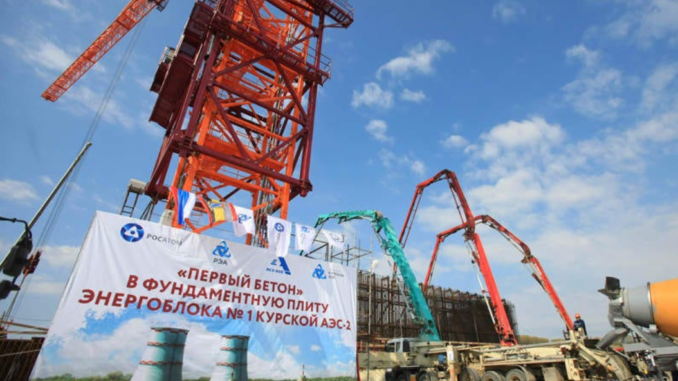 Concrete for the first Kursk 2 reactor is being poured in 2018
Concrete for the first Kursk 2 reactor is being poured in 2018
Ukraine has tried to attack the Kursk nuclear power plant reinforcing a theory that the Kursk offensive was aimed at creating significant havoc by either capturing or wrecking the Kursk NPP.
The Russian Ministry of Defense reported a single suicide drone attack on the plant. Russian President Vladimir Putin said that “The enemy tried to strike the Nuclear Power Plant … and the International Atomic Energy Agency (IAEA) has been informed, and they have promised to visit and send specialists to assess the situation.” The head of the IAEA, Rafael Grossi, said he plans to visit the plant during the week of August 26th.
Last year there was a Ukrainian drone attack on the same facility. Nuclear Engineering International reported that in July 2023 “Unit 4 at Russia’s Kursk NPP was completely disconnected from the grid following a Ukrainian kamikaze drone carrying explosives fell near the station.”
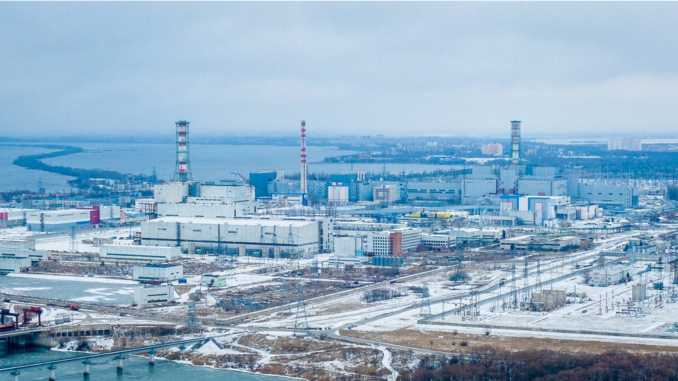 Aerial view of part of the Kursk NPP
Aerial view of part of the Kursk NPP
In the latest attack, parts of one downed drone were found about 100 meters (328 feet) from the complex.
There are pictures of the drone itself (see below), It is a quadcopter FPV drone that was carrying an improvised explosive device that looks like the warhead of an RPG 7 or something similar.
Here is a picture of the warhead device as shown on a Russian Telegraph channel.
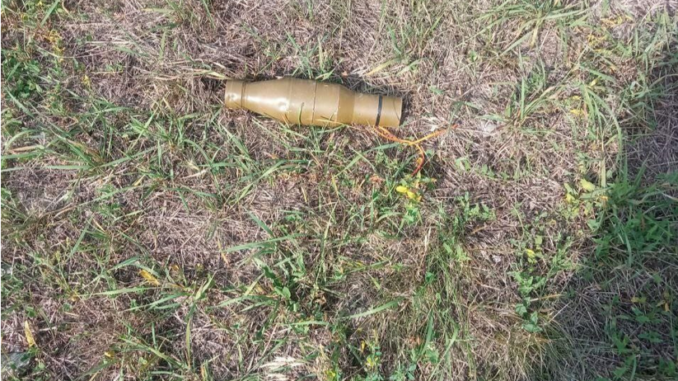
The device appears to be similar to a TBG-7V warhead. It is a thermobaric bomb.
The drone itself is a quadcopter FPV drone. Below is what it looks like:

This is a battery powered drone that has a short range of a few kilometers.
If the photos are correct representations of what the Russian Defense Ministry and President Putin say was used to attack the Kursk NPP, there is little reason to believe it could cause much real damage.
It would also seem the drone was smuggled into the Kursk NPP area and operated locally.
The Acting Governor of the Kursk region, Alexey Smirnov reported a more substantial attack than the Defense Ministry. He said there were four missile warnings on August 21st and August 22nd. He said that air defenses shot down one Ukrainian missile in the evening (on the 21st) and two during the night as well as one drone (on the 22nd). Smirnov did not report the type of missiles or drone used in the attack.
Shortly after the attack on the cooling tower of the Zaporizhzhia Nuclear Power Plant on Sunday, August 11, the Russians put air defenses around the Kursk NPP, fearing a Ukrainian attack there too. According to the Russians, the Zaporizhzhia Nuclear Power Plant was hit by two drones. The IAEA went to the Plant to assess the damage and measure any possible release of radiation.
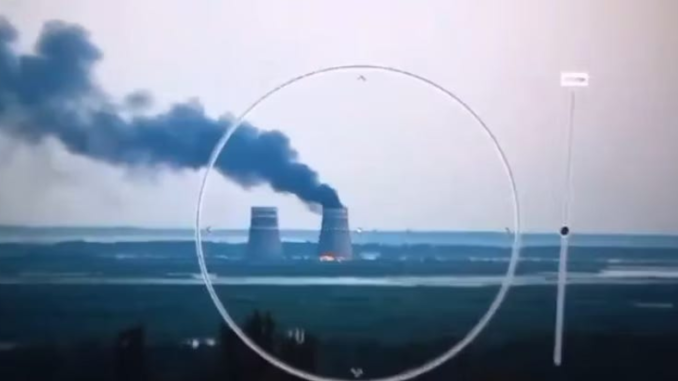
The attack in Kursk seemed aimed at the nuclear waste storage area in the facility although that is not confirmed.
It isn’t clear why Smirnov’s report differed from the official report on the attack.
The official revelation about a single drone suggests that the Russians wanted to emphasize that an attack took place but did not want to create alarm in the region.
We do not know the type of air defenses installed around the Kursk NPP.
The Kursk Nuclear Power Plant is one of the three biggest nuclear power plants in Russia and the fourth biggest electricity producer in Russia. Currently there are two active nuclear reactors, two decommissioned older units, two partially built units (Kursk 5 and Kursk 6) which will not be completed, and two new VVER reactors currently under construction. VVER is a water-water energetic reactor originally designed at the Kurchatov Institute by Savely Moiseevich Feinberg. The new version of the design is the VVER-TOI and the first TOI plants are under construction at Kursk. It has improved safety standards and greater power output and has been certified as compliant with European Utility Requirements (with reservations). The plan at Kursk is to replace the two older operating reactors with the two new reactors (construction started in 2018) and two more VVER-TOI reactors will be built in future. In January, 2023 a 235 ton steel dome was set on unit 1 reactor and covered with a thick layer of reinforced concrete, forming the containment building.
The two operating reactors and two decommissioned reactors are the same RBMK (graphite-moderated nuclear power reactor ) design as at Chernobyl. The facility, which is 40 km west of Kursk, has been used as a prop for filming stories about Chernobyl. The Chernobyl disaster in April, 1986 happened because of a failed test procedure that caused the reactor to go out of control. In turn that led to an explosion and a series of tragic events to try to control the damaged reactor and to contain the spread of the disaster to the other three reactors. Around 5% of the reactor core of the damaged facility was released into the atmosphere and radiation spread to many parts of Europe. Two Chernobyl plant workers died due to the explosion on the night of the accident, and a further 28 people died within a few weeks as a result of acute radiation syndrome. The United Nations Scientific Committee on the Effects of Atomic Radiation has concluded there were some 5000 thyroid cancers (resulting in 15 fatalities). Heroic helicopter pilots and others trying to stop the runaway reactor and build a cement covering to prevent further radiation leaks died later as a result of radiation poisoning.
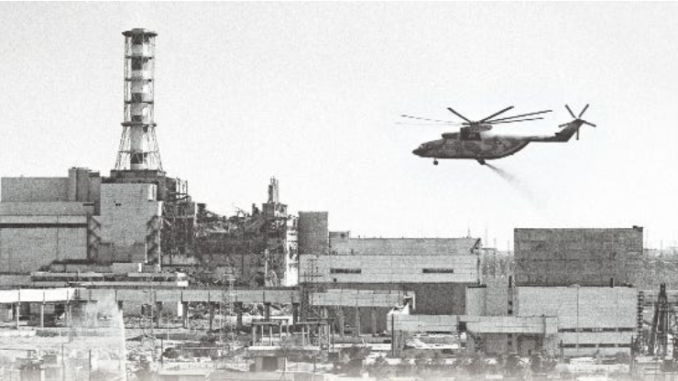 A Helicopter flying over Chernobyl. (See https://www.ruaviation.com/docs/8/2017/5/10/137/?h)
A Helicopter flying over Chernobyl. (See https://www.ruaviation.com/docs/8/2017/5/10/137/?h)
What Would Ukraine Gain from Attacking the Kursk NPP?
Many have commented about Ukraine’s operation inside Russian territory in the Kursk region, since strictly speaking the attacks have no specific military purpose. The Russians had only thinly manned the area with territorial troops, Russia’s command system considered the area a third-level priority, and few if any preparations were made to defend a mostly rural, thinly populated region. There were no significant fortifications, command centers, or air defense systems at the time the attacks started on August 6th.
There is considerable controversy on NATO’s involvement in the Kursk operation. The Russians are convinced that the Kursk attack was planned by NATO and that NATO secretly trained the Ukrainians for the operation. Significant amounts of western equipment (including Leopard, Challenger and Abrams tanks) and air defenses (IRIS-T, Crotale NG, and Patriot) and thousands of drones are engaged. The Russians likewise believe that the Ukrainians are getting significant intelligence help from NATO.
NATO countries say they were not informed about the operation. Mostly the main western players have been silent about the attacks on the Zaporizhzhia Nuclear Power Plant and the Kursk NPP.
The best available analysis is that the objective in attacking the two nuclear sites was to sow panic both in Russia and in Europe. The idea of causing trouble for the Russians is well known and has been part of the NATO scenario for Ukraine. Knowing that, in the end, Ukraine cannot be successful against a larger and well-equipped Russian military, destabilizing the Moscow government has been a workaround approach to a war in Ukraine that, sooner or later, will end badly. The latest attempt to launch a swarm of drones at Moscow is part of such a plan. Whether destabilizing Russia was ever possible is open to considerable doubt, but when you’re rolling the dice you can always hope to roll a seven.
The second and related explanation is to encourage NATO to come to Ukraine’s rescue. A nuclear disaster might induce Europe to clamor for military intervention in Ukraine and help convince the US to commit crack airborne forces to the war. The idea of a war in Ukraine with US and other NATO forces would cause the war to spread throughout Europe or even beyond. It would create other consequences such as an Iranian attack on Israel or a Chinese attack on Taiwan, taking advantage of US and NATO preoccupation in Europe.
One question that arises is whether NATO’s involvement had high level backing, or if in fact it was a colonel’s solution to a growing realization that Zelensky and his regime would soon be defeated on the battlefield. NATO military operators have been at this war for a long time and have taken their own battlefield losses as Russia targeted command centers in Ukraine filled with NATO officers.
There has been no public attempt to figure out who was involved in the Kursk operation or who was behind the attacks on the Ukrainian and Russian nuclear power plants. Such provocations do have serious consequences, although what they are has yet to be understood. Moscow’s soon-retiring Ambassador to the US Anatoly Antonov told journalists on Thursday, August 22nd (reported by Russia Today, a Russian-government news outlet) that “Putin has decided on how to respond to Kiev’s incursion into Russia’s Kursk Region and everyone responsible will undoubtedly be punished.”
Meanwhile the danger of a well aimed drone or missile at a nuclear facility raises the specter of another Chernobyl, or worse.



I don’t think there is any evidence that the Ukrainians are planning to attack the Kursk nuclear plant. There would be absolutely no advantage to the Ukraine in doing this. I believe that these false claims originate with the usual Russian and pro-Russian sources.
By the way–John Mearsheimer has been exposed as receiving money from a Russia-based “club” or society of self-described experts on military matters and international relations. He apparently acknowledged this group as one of his sources of income in a U.S. tax filing, A pro-Ukraine American blogger managed to take screenshot sof the tax filing, although this is probably illegal and spreaded it around on social media sites.